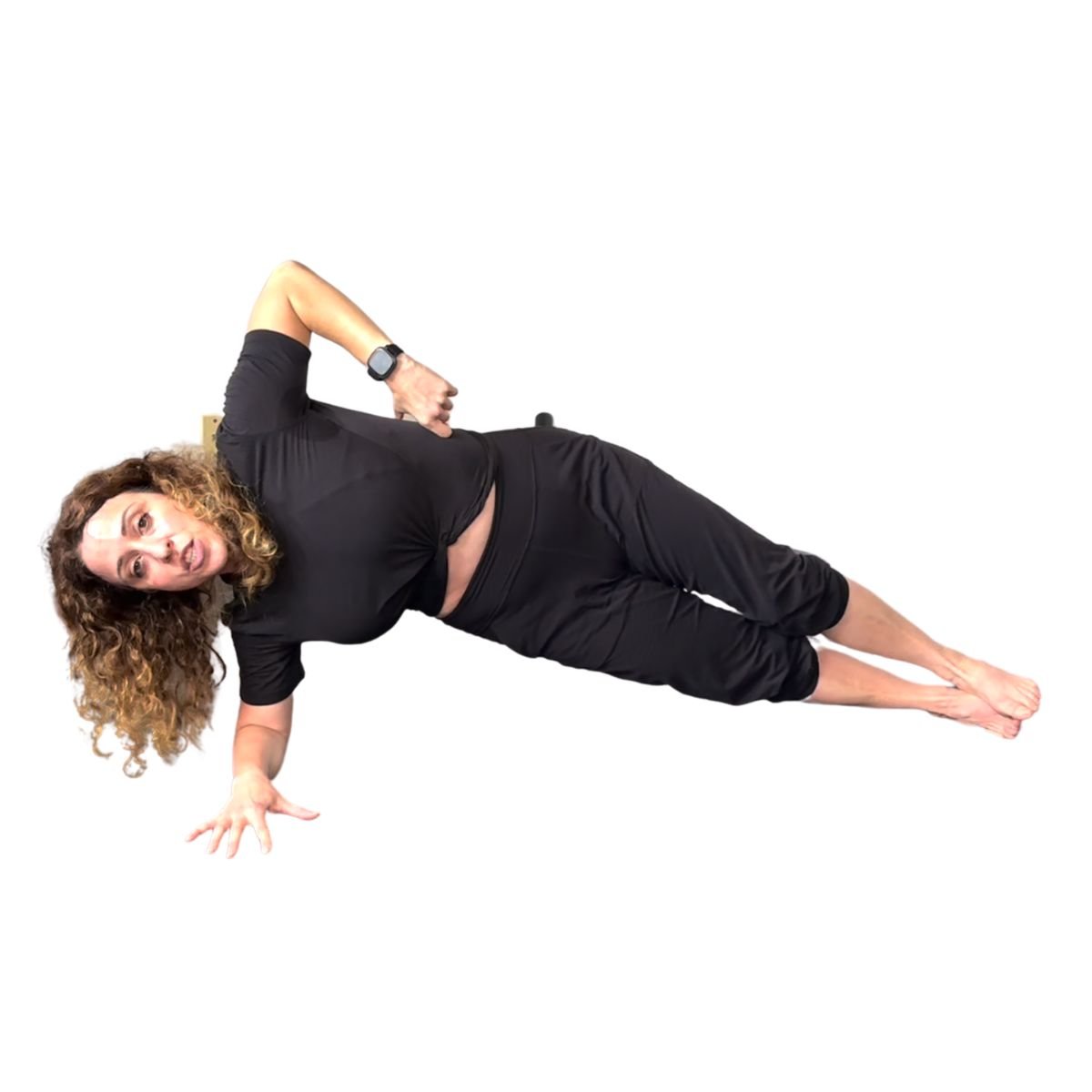Side Plank for a Strong Core
Revised by Stephanie Zaban (Registered Kinesiologist & Masters of Kinesiology)Table of Contents
What Is a Side Plank
The Side Plank is a full-body exercise that targets the core musculature, particularly the obliques. This is a staple exercise for improving core stability and targeting the oblique muscles for improved full-body strength, stability and balance.
How to Do a Side Plank
To learn how to perform the Side Plank, follow these simple steps:
Lay down on the floor, on your side with your legs extended straight out.
Prop yourself up on your bottom elbow, with it stacked directly below your shoulder and your forearm pressed flat on the ground.
Stack your feet on top of each other or place your top foot just in front of your bottom foot, with the side of your foot (or feet) on the ground.
Keep your head and neck in line with your spine. Keeping your sightline straight ahead can help achieve this.
Bracing your core, lift your hips off the ground creating a straight line from your head, through your torso and to your feet.
Keep your chest, hips and belly button facing directly forward. Hold this position, stabilizing through your hips and shoulder.
Side Plank Form
Achieving the proper form in your Side Plank is crucial for obtaining the full benefits of the exercise and avoiding injury. While performing the Side Plank, the elbow of the supporting arm should be bent at ninety degrees and in line with your shoulder and the rest of your body. Keep your supporting shoulder pulled down and away from your ear to avoid placing excessive stress on the shoulder/AC joint.
Keeping your supporting shoulder blade pulled down and back by engaging the back and smaller stabilizing muscles will also help keep your chest upright and your body from rolling forwards.
Your top arm can be rested at your side along with your body, bent with your hand on your head, or extended straight up in the air for an additional stability challenge.
If you lack the strength or stability to hold the full Side Plank, you can make the exercise easier by stacking and supporting yourself up on your knees with your legs bent behind you.
Side Plank Muscles Worked
Many muscles are activated when performing the Side Plank including,
Side Plank Benefits
Including the Side Plank or one of its variations in your workouts can result in,
Increased core strength & stability.
Improved balance.
Improved muscle coordination.
Improved/balanced posture.
Why Is the Side Plank Useful
The Side Plank is an easy exercise to learn, is excellent for developing core strength and stability and can help develop a better posture. Although the Side Plank targets primarily the obliques, it requires strength from the hips and shoulders making it a great full-body exercise. It also does not place much stress on the lower back or neck. The Side Plank requires no equipment and can be modified in several ways to add a challenge.
Side Plank Variations
Side Plank Dips
Starting from the Side Plank position, lower your pelvis towards the floor without letting your bottom hip touch. Keep your core muscles engaged throughout, lift yourself back up to the starting position by pushing with your bottom side obliques and glutes. Repeat the movement for the given amount of reps.
Side Plank Hip Lifts
These are similar to the Side Plank Dips, however you are allowing your hip to drop all the way down to the floor between each rep. This can be a great way to build up strength and stability to work up to a longer hold in the side plank.
Side Plank Crunch
While holding the Side Plank position, bring your top knee up towards your chest/same side shoulder.
Side Plank Rotation
Start by having your top arm extended upwards towards the ceiling. While maintaining the side plank position with the hips stabilized off the ground, rotate your shoulders forward slightly and reach below and behind your body with our top arm. Return to the start position with your arm extended above to complete one rep
Side Plank Clamshell
Done from a Side Plank with the legs bent and up on the knees, instead of the legs straight and balancing on the side of the foot. As your prop yourself up into the side plank, lift your top leg into the air as well using your glute muscles
Side Plank Row
Add a horizontal row to the Side Plank with the non-stabilizing arm in the form of a resistance band or cable.
Side Plank Alternatives
Is a Side Plank an Isometric Exercise
The side plank is an isometric exercise. Isometric exercises involve contracting the muscles without any visible movement in the angle of the joint. In a side plank, the muscles, especially those in the core, are engaged and contracted to maintain the position, but there's no movement of the joints.

